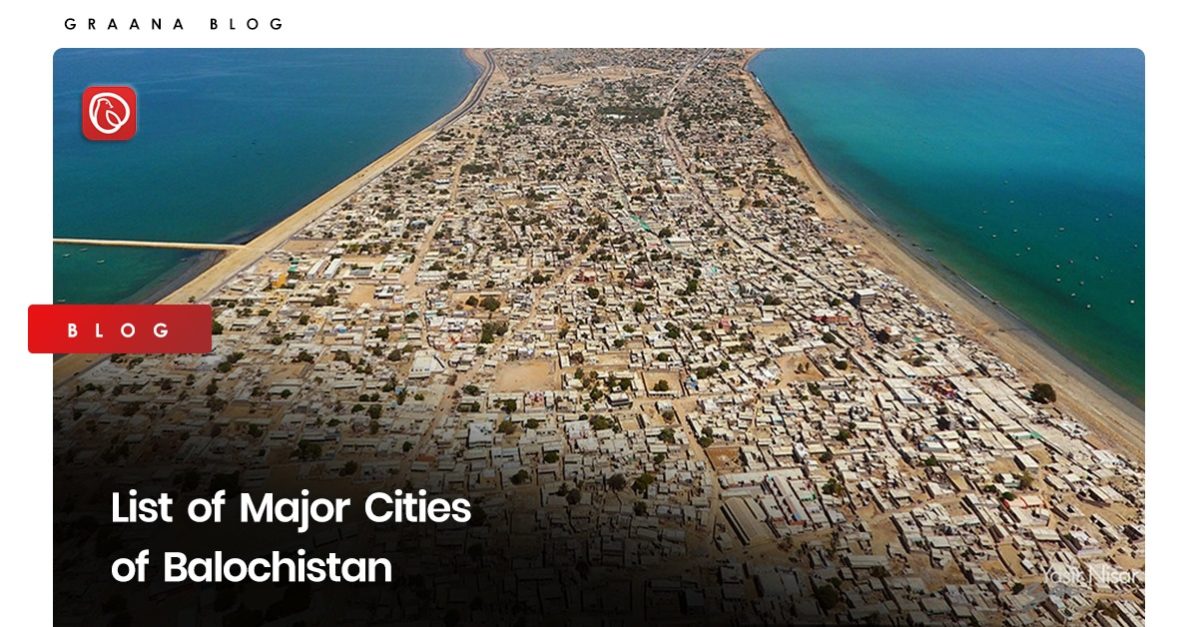Balochistan is the largest province of Pakistan in terms of area, covering approximately 44% of the country’s total landmass. Despite its vast size, Balochistan is one of the least populated provinces, with a majority of its residents living in rural areas.
However, there are several cities in Balochistan that serve as important economic and cultural centres for the region. Graana.com provides a detailed overview of some of the major cities of Balochistan below.
The Cities of Balochistan
Following is the complete list of cities of Balochistan, with details about their population and the district they are located in.
| No. | City | District |
Population (2017) |
| 1 | Quetta | Quetta | 1,001,205 |
| 2 | Turbat | Kech | 213,557 |
| 3 | Khuzdar | Khuzdar | 182,927 |
| 4 | Hub | Hub | 175,376 |
| 5 | Chaman | Chaman District | 123,191 |
| 6 | Dera Murad Jamali | Nasirabad | 96,591 |
| 7 | Gwadar | Gwadar | 90,762 |
| 8 | Dera Allah Yar | Jaffarabad | 80,908 |
| 9 | Usta Mohammad | Jaffarabad | 77,097 |
| 10 | Sui Town | Dera Bugti | 71,676 |
| 11 | Sibi | Sibi | 64,427 |
| 12 | Loralai | Loralai | 54,758 |
| 13 | Tump | Kech | 48,766 |
| 14 | Nushki | Nushki | 46,386 |
| 15 | Zhob | Zhob | 46,248 |
| 16 | Kharan | Kharan | 156,152 |
| 17 | Chitkan | Panjgur | 44,434 |
| 18 | Khanozai | Pishin | 40,238 |
| 19 | Buleda | Kech | 39,813 |
| 20 | Saranan | Pishin | 37,927 |
| 21 | Zehri | Khuzdar | 37,854 |
| 22 | Qalat | Qalat | 36,864 |
| 23 | Tasp | Panjgur | 35,890 |
| 24 | Surab | Shaheed Sikandarabad | 35,594 |
| 25 | Pishin | Pishin | 35,577 |
| 26 | Mastung | Sibi | 35,129 |
| 27 | Qilla Saifullah | Qilla Saifullah | 34,677 |
| 28 | Pasni | Gwadar | 34,524 |
| 29 | Nal | Khuzdar | 33,299 |
| 30 | Winder | Lasbela | 29,598 |
| 31 | Uthal | Lasbela | 29,414 |
| 32 | Huramzai | Pishin | 29,400 |
| 33 | Muslim Bagh | Qilla Saifullah | 28,066 |
| 34 | Dera Bugti | Dera Bugti | 27,625 |
| 35 | Qilla Abdullah | Qila Abdullah | 26,151 |
| 36 | Bela | Lasbela | 24,318 |
| 37 | Wadh | Khuzdar | 23,056 |
| 38 | Washuk | Washuk | 21,872 |
| 39 | Awaran | Awaran | 21,848 |
| 40 | Machh | Kachhi | 19,152 |
| 41 | Jiwani | Gwadar | 18,533 |
| 42 | Ormara | Gwadar | 17,780 |
| 43 | Kohlu | Kohlu | 17,426 |
| 44 | Bhag | Sibi | 16,608 |
| 45 | Dalbandin | Chagai | 16,319 |
| 46 | Dhadar | Kachhi | 15,280 |
| 47 | Musakhel | Musakhel | 14,138 |
| 48 | Harnai | Harnai | 13,297 |
| 49 | Dureji | Lasbela | 12,871 |
| 50 | Sohbatpur | Sohbatpur | 12,867 |
| 51 | Gajjar Mashkay | Awaran | 12,493 |
| 52 | Barkhan | Barkhan | 12,176 |
| 53 | Shahrug | Harnai | 11,257 |
| 54 | Duki | Duki | 10,180 |
| 55 | Ziarat | Ziarat | 160,422 |
Quetta
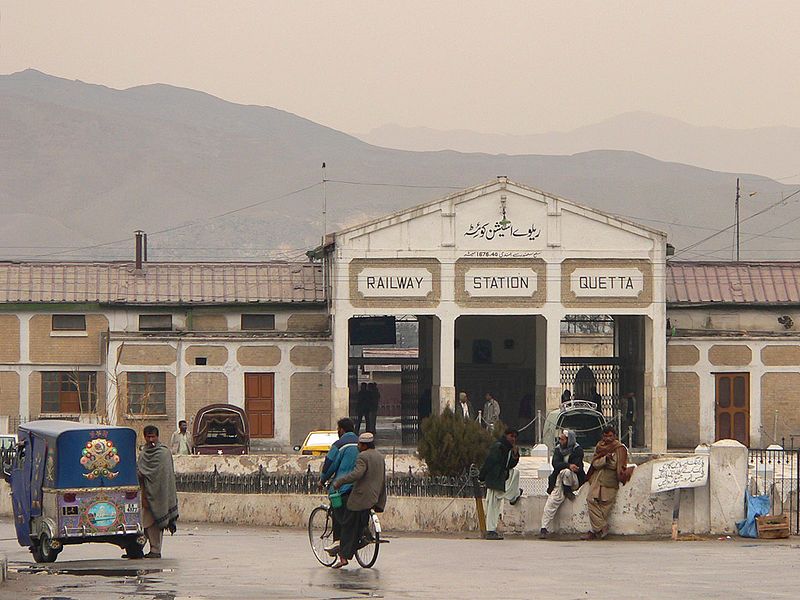
With a population of over 1.1 million, Quetta is the tenth most populous city in the country and one of the largest cities in Balochistan. Located close to the border with Afghanistan and near the road to Kandahar, Quetta serves as a key trade and communication hub between the two countries. The city is also located near the historic Bolan Pass route, which once connected Central Asia to South Asia.
It lies near the northern end of the Shāl Valley and serves as the divisional and district headquarters. The city is renowned for its many fruit orchards and abundant fruit production, earning it the name “Fruit Garden of Pakistan”.
The British occupied Quetta in 1876 and established a residency under the leadership of Sir Robert Sandeman. The town developed around the strongly garrisoned army station and was incorporated as a municipality in 1896. The Army Command and Staff College was opened in Quetta in 1907.
A devastating earthquake partially destroyed the city in 1935, causing the loss of 20,000 lives. Today, Quetta is a market centre for western Afghanistan, eastern Iran, and part of Central Asia.
Its industries include cotton mills, a sulphur refinery, coke briquette plants, a thermal power station, and fruit canneries. The city has many renowned educational institutes such as the University of Balochistan.
Turbat
Turbat is a town located in the southern region of Balochistan. Situated along the banks of the Kech River, a tributary of the Dasht River, Turbat is surrounded by the majestic Makran Range to the north and east, which descends to the coastal plains in the south.
The fertile land of Turbat is not only abundant with dates, but also with other crops such as Jowar (sorghum), barley, wheat, and rice, making it a hub of agriculture. Furthermore, Turbat is also known for its livestock industry.
It is located 180 km from the important Gwadar port. The two are connected by a highway that was improved under the China-Pakistan Economic Corridor (CPEC). Despite not being located on the coast, the city has a new Pakistan Navy base that is expanding to become a major air base supporting Karachi.
Turbat is linked to the coastal city of Pasni to the south, which falls under the administrative district of Gwadar. The city also shares a 120 km-border with Iran. Turbat is known for being one of the hottest cities in South Asia and even in the world, having recorded temperatures as high as 53.5°C.
On May 28th, 2017, Turbat recorded a temperature of 53.7°C, which places it among the four highest temperatures ever recorded on Earth, according to the World Meteorological Organization (WMO).
Khuzdar
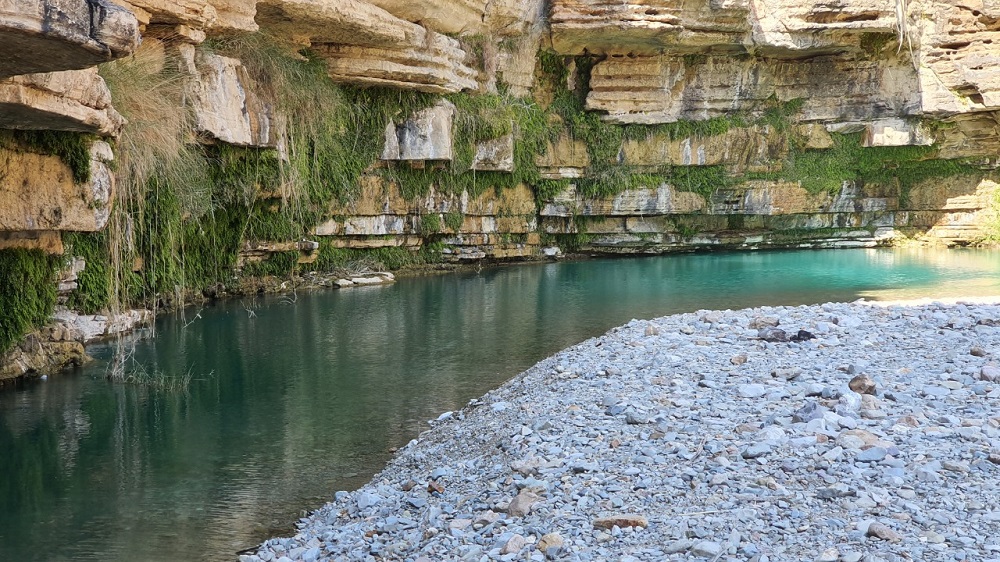
Khuzdar, also known as Qusdar in the past, is the capital city of the Khuzdar district in Balochistan. It is the 2nd-largest city in the province and the 47th-largest city in Pakistan according to the 2017 census.
Khuzdar has a rich history that dates back to the 17th century when it was part of the Jhalawan Kingdom. However, it soon came under the control of the Khanate of Kalat and remained so until there was a series of revolts during the reign of Khudadad Khan. After Khudadad’s death, the authority of Kalat was restored, and Khuzdar became the capital and largest city of the Jhalawan province of the Khanate.
In 1903, the British established a political agency in Khuzdar under a treaty with Kalat, providing continued assistance until 1947. Afterwards, the region acceded to Pakistan. It later became the capital of the newly formed Kalat Division and is now the largest Brahui-speaking city in the country.
It is a major centre of education in the region, with a number of renowned universities and colleges established there. There are some famous tourist attractions in the city like Charo Machi Waterfall which was a recently discovered natural oasis.
Hub
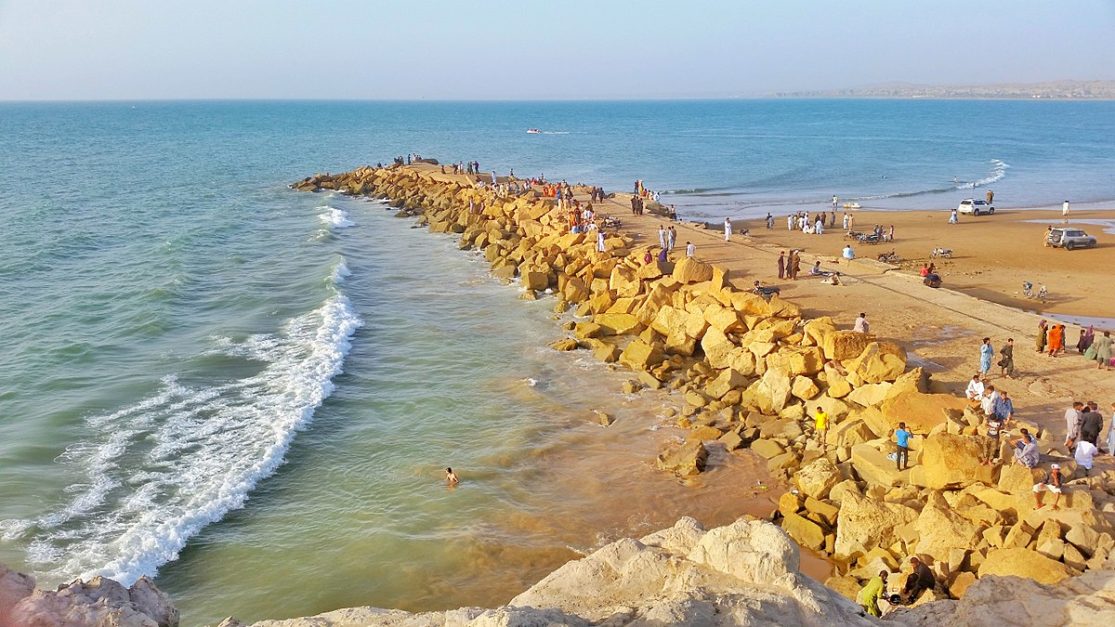
Hub is one of the cities of Balochistan and the capital of the Hub district. It is the 4th-largest city in Balochistan and the 49th-largest city in Pakistan according to the 2017 census. The city was originally named Hub Chowki after a police checkpoint (known as chowki in Urdu) in the area named Nakahi.
With the growth of industries and factories, the town was later renamed Hub. It has become a major industrial centre in Balochistan and, due to its proximity to Karachi, it is also a commuter town for the metropolitan city.
The Hub-Malir area was once a part of the Kalmati Malik Principality after the collapse of the Sultanate of Makran in the mid-12th to early 14th century. The Baloch state of Kalmat, which flourished from the 14th to mid-16th century, is believed to have extended from Pasni to the Hub river in the coastal region.
Chaman
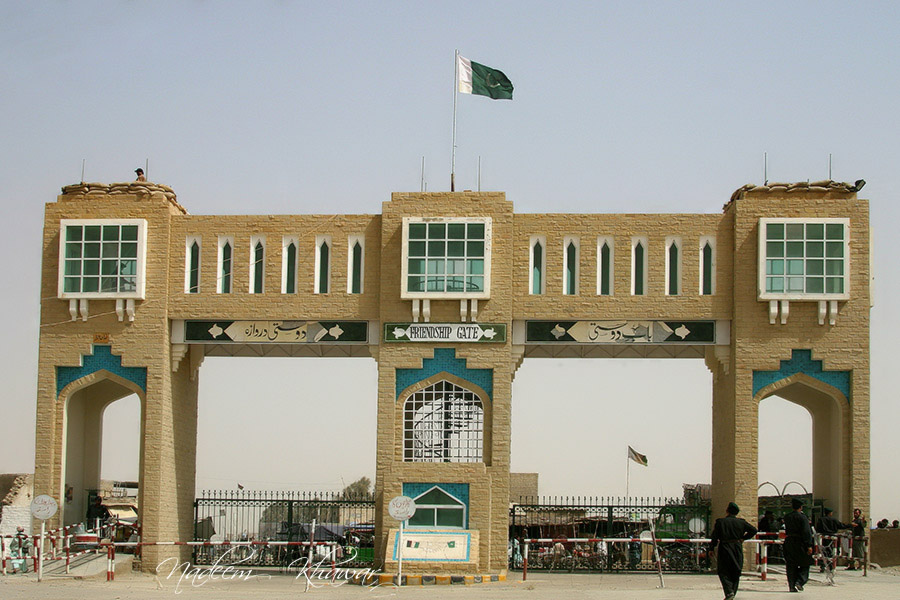
Chaman serves as the headquarters of the Chaman district. Located near the Afghanistan-Pakistan border, it is situated just south of the Wesh-Chaman crossing point connecting to Kandahar Province in Afghanistan.
It is one of the most important cities in Balochistan and is located in the northern part of the province, which is predominantly inhabited by Pashtuns. The Chaman district was created after being separated from the Qila Abdullah district.
Chaman is an important centre of trade and commerce, serving as a key transit point between Afghanistan and the rest of the region. The city is also home to a number of historic sites, including the Chaman Fort, which was built in the 19th century to defend the city from attacks.
The city underwent significant development during the martial law period in the 1980s. It imports a variety of goods, including cars, motorcycles and rickshaws, as well as consumer products such as phones, cosmetics, perfumes, and other goods from Afghanistan into Pakistan.
Gwadar
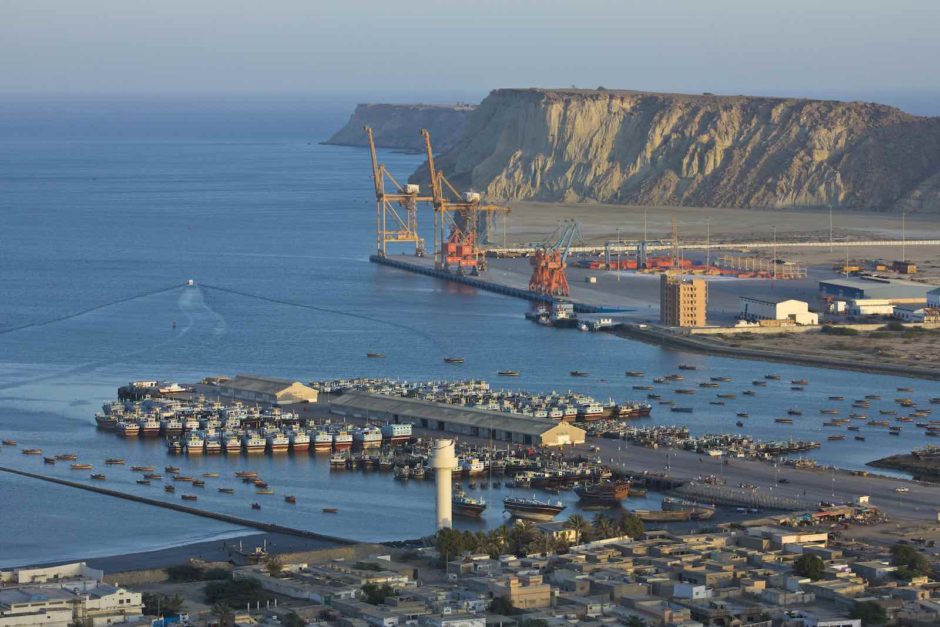
This port city is located in southwestern Balochistan, situated on the shores of the Arabian Sea across from Oman. It is a relatively small city of Balochistan province, but its strategic location at the mouth of the Persian Gulf has made it an important centre of trade and commerce in the region.
It is located about 120 km southwest of Turbat and 170 km west of the Iranian port city of Chabahar. Recently, Gwadar was declared the capital of the South Balochistan region.
The city has a rich history, having been under the possession of Oman from 1783 to 1958. It gained importance after the Kargil War, when the country felt the need for a naval port. The Karachi-Gwadar Road was built for defence purposes.
Historically, Gwadar had a small economy based on fishing, but its location was recognised as a suitable site for a deep water port in 1954 by the US Geological Survey. Despite its potential, the area was neglected by Pakistani governments until 2001, when the construction of the first phase of Gwadar Port began.
This development of the Gwadar Port and the connectivity with other cities is expected to have a major impact on the region, creating jobs and boosting economic activity.
China has a significant stake in the Gwadar Port, with a 91% share of revenue generated, while Pakistan receives 9%. In 2013, the state-owned China Overseas Port Holdings Limited acquired the port. Gwadar is strategically important for China as it reduces the distance for oil transportation from the Persian Gulf from 16,000 km to just 5,000 km.
Apart from the development of the port, there are several projects that have been developed recently which include Gwadar Free Zone, Gwadar Marine Drive, and Gwadar Cricket Stadium.
Sibi
Sibi serves as the headquarters of its district and tehsil. The name of the city is said to be derived from Rani Sewi, a Hindu ruler of the Sewa dynasty in the 7th century. The history of the Sibi region dates back to the 7th century and has been ruled by various dynasties such as the Sewa dynasty, Ghurid Empire, Samma dynasty of Sindh, Kalhora dynasty, Afsharids, and Durrani Empire.
In 1880, Sibi was brought under the control of the British Crown and served as an important junction on the Harnai and Quetta railway lines. After Pakistan’s independence in 1947, Sibi became part of the country.
The diverse population of Turbat is reflected in the mixture of languages spoken within the city. Balochi, Sindhi, and Saraiki form the majority of the population, but there are also smaller communities that speak other languages such as Pashto and Brahui. This multilingual society has helped shape the unique cultural identity of the city.
Zhob
Zhob, also known as Zhobak, is a city and the capital of the Zhob district in the Balochistan province. It is located on the banks of Zhob River, which is 337 km from Quetta.
The city was originally named Appozai after a nearby village but was renamed Fort Sandeman during the British colonial era, after the British Indian Army officer Robert Groves Sandeman. On July 30th, 1976, Prime Minister Zulfikar Ali Bhutto changed the name to Zhob.
Pishin
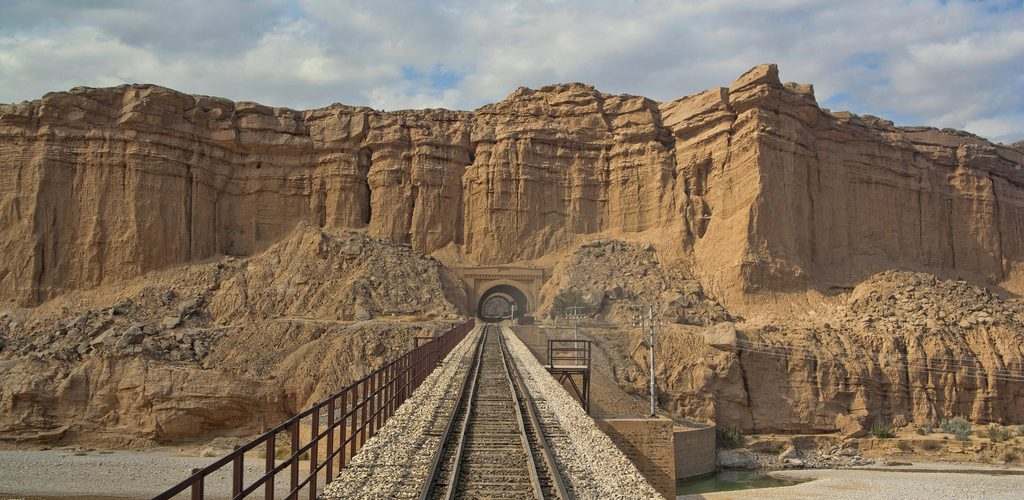
Pishin serves as the capital of the Pishin district. It is an important link between the province’s capital, Quetta, and the rest of the country. The city is primarily inhabited by Pashtun tribes, who are the largest ethnic group in the district.
Pishin was established by the British Empire in 1883. During the Anglo-Afghan Wars, the local tribes in the area staged attacks on British convoys travelling to Afghanistan. During World War II, two air bases were built in the district – one near Pishin and another in Saranan.
Mastung
Mastung, the capital of the Mastung district, is located at an elevation of 1701 metres. It serves as the administrative centre for Mastung Tehsil and is split into two union councils.
Mastung is part of Sarawan, which is a division of the former princely state of Kalat, and the leader of Sarawan hails from Mastung. According to 10th-century geographers al-Muqaddasi and Istakhri, Mastung was listed among the towns in the province of Bālis, also called Bālish or Wālishtān, with Sibi as its capital.
The Mughal text, Ain-i-Akbari, written during the reign of Emperor Akbar in the late 16th century, includes Mastung as one of the 24 mahals in the Sarkar of Kandahar. At that time, Mastung was protected by a mud-brick fort and had a mixed population of Afghans and Balochs.
Sui
Sui is a sub-district located in the Dera Bugti district. It is known for the Sui gas field, which is situated near the town of Sui. The area is primarily inhabited by Bugti tribes.
Geographically, Sui is situated at the intersection of three provinces: Balochistan, Sindh, and Punjab. It is located 40 km south of Dera Bugti, 9 km from Punjab, and 10 km from Sindh. The Indus River has situated 25 km to the east of Sui.
Sui serves as the administrative center of Sui tehsil and operates as a union council. It has gas compression facilities, which transport natural gas to nearby towns in Punjab and Sindh, as well as to Quetta, located about 200 miles away.
Usta Muhammad
Usta Muhammad is a city located in the Usta Muhammad district of Balochistan. It covers an area of 978 square kilometres and has a population of 76,753, according to the 2017 Census of Pakistan.
The majority of the residents are Balochs, Brahuis, and Jamotes, with the Baloch tribes including Jamali, Babbar, Umrani, Rind, Bulledi, Jatoi, Marri, Hijwani, Bugti, Mastoi Chandia, and others.
Qalat
Kalat, also known as Qalat and historically known as Qīqān, is one of the historic cities of Balochistan. It is the capital of the Kalat district and is known locally as Kalat-e-Brahui and Kalat-e-Sewa. It was also once the capital of the Kalat Khanate.
The town of Kalat is said to be named after the legendary hero Sewa of the Brahui people. The Brahui tribes arrived in the area prior to the Balochi-speaking tribes and established a kingdom in the 15th century. However, it declined and the region was briefly ruled by the Mughals.
The Brahui-speaking Khans of Kalat dominated the area from the 17th century until the arrival of the British in the 19th century when a treaty was signed, making Kalat part of the British Empire.
In 1947, the Khan of Kalat was reported to have acceded to Pakistan. The last Khan of Kalat was removed from power in 1955, but the title is still claimed by his descendants. The current Khan of Kalat is Mir Suleman Dawood Jan, who holds the title ceremonially.
Kharan
Kharan is a town located in the Kharan district of Balochistan. With an altitude of 2,273 feet (692 metres), it is the headquarters of the Rakhshan Division.
The town is home to various Baloch tribes and clans, including the former chief justice of the Federal Shariat Court and Balochistan High Court, Mohammad Noor Meskanzai. Kharan is known for its dry landscape.
Ziarat
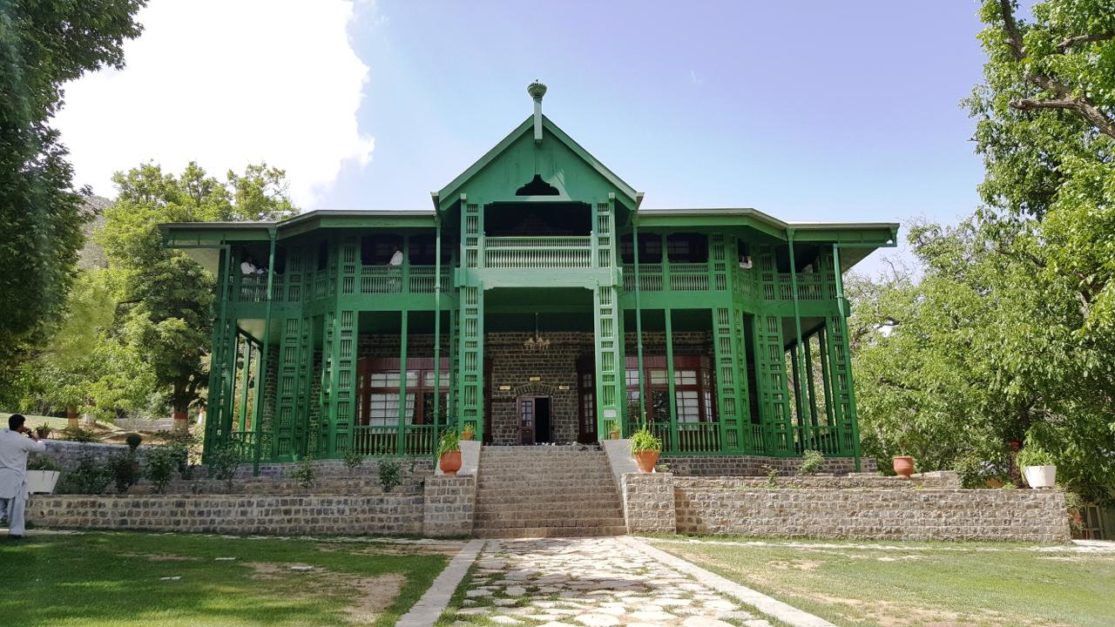
Ziarat is a city located in the Ziarat district of Balochistan, 130 km from Quetta. It was established as a district in 1986 and was previously part of the Sibi district. The city is famous for the Quaid-e-Azam Residency, where the founder of Pakistan spent a significant portion of his life.
On October 29th, 2008, Ziarat and its surrounding areas were struck by a powerful earthquake that resulted in significant damage and loss of life. Over 200 people were killed and 50,000 were left homeless.
The area was made less accessible due to landslides that cut off many roads, making it difficult for emergency responders to reach those in need. Pakistani military helicopters were deployed to access remote and mountainous locations.
Ziarat is surrounded by the lush green Ziarat Juniper Forest, also known as Sanober, the largest juniper forest (Juniperus seravschanica) in Pakistan. The forest covers about 110,000 hectares, and is believed to be the second largest of its kind in the world. The city is home to indigenous tribes such as Kakar and Tareen, including the Raisani tribe.
Conclusion
To sum it up, Balochistan is a vast and diverse province that is home to a number of cities, each with its own unique character and charm. They represent the rich cultural heritage of the province and are a testament to its potential for further economic development and growth.
To know about the major cities of Balochistan, follow Graana.com.
